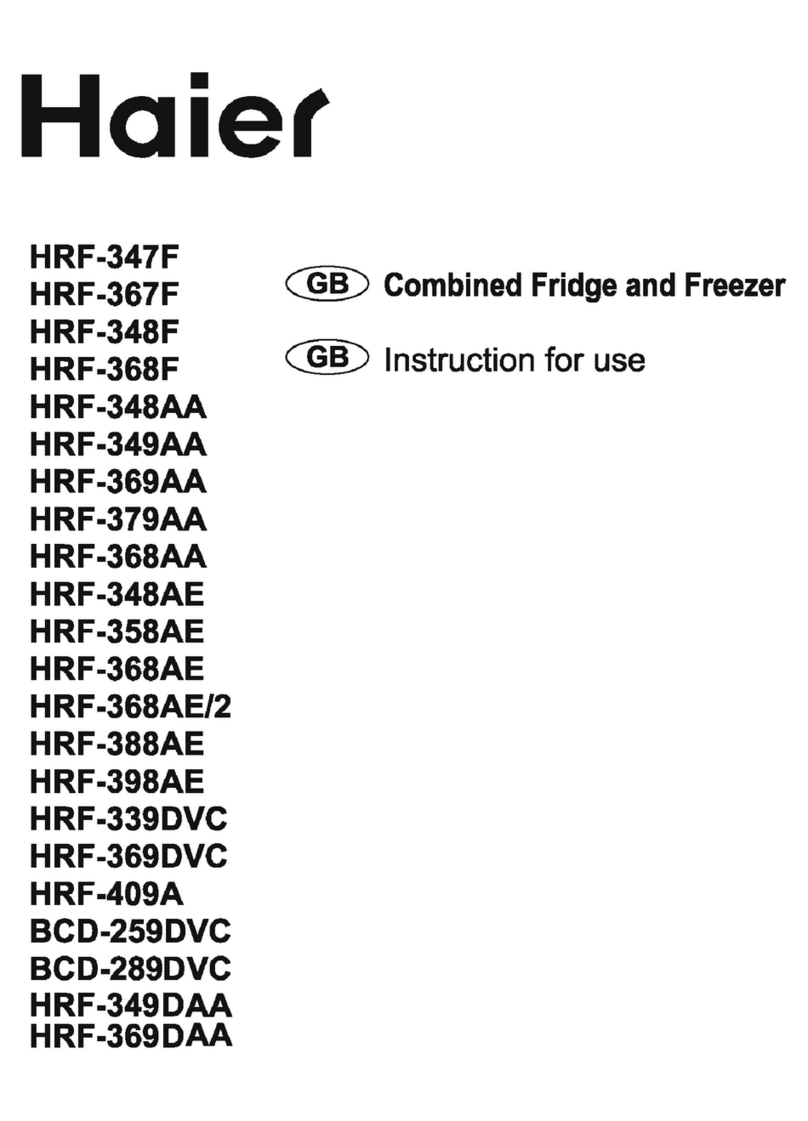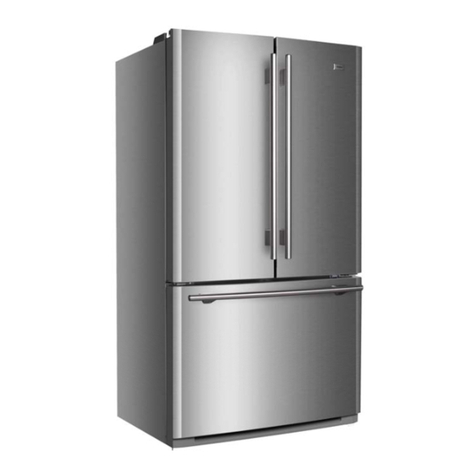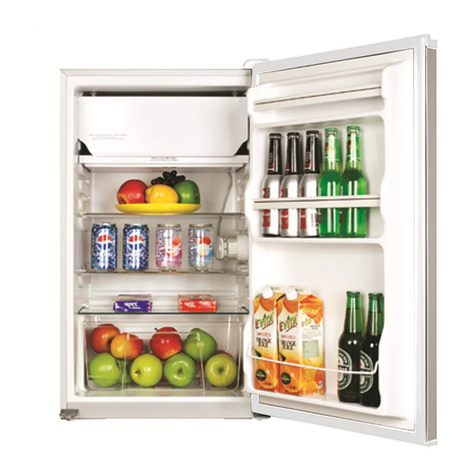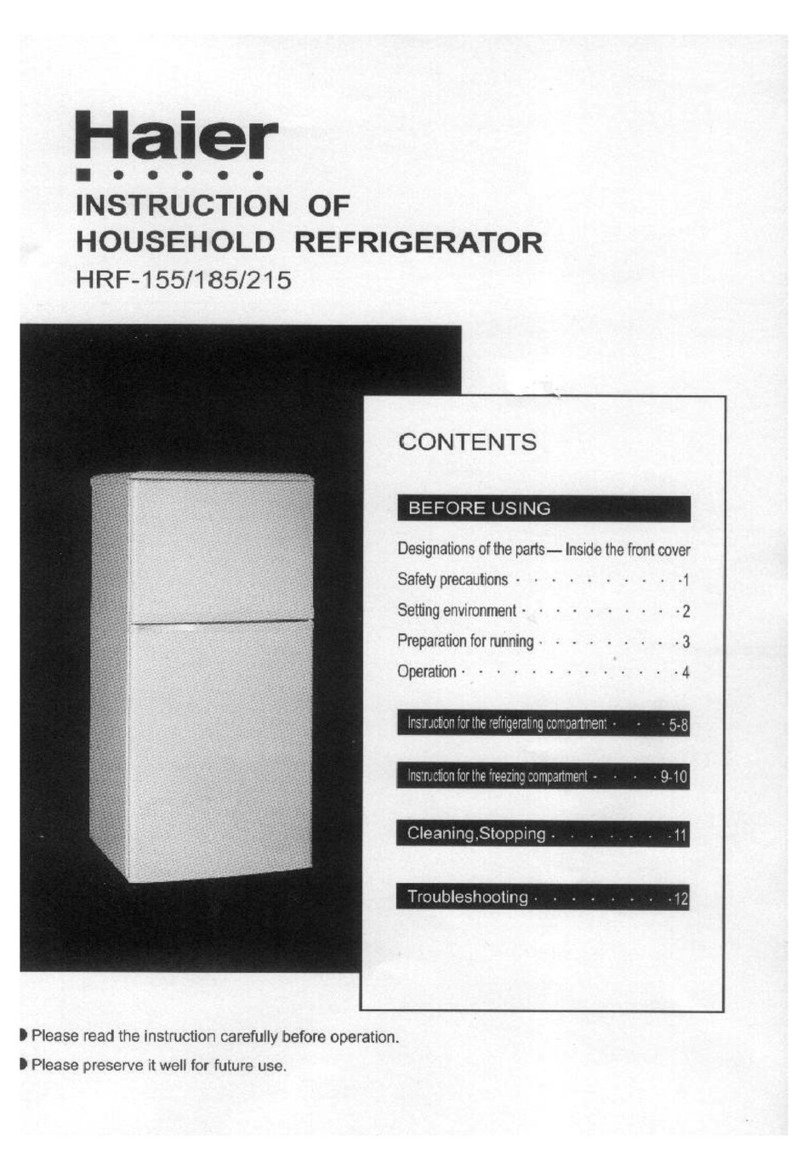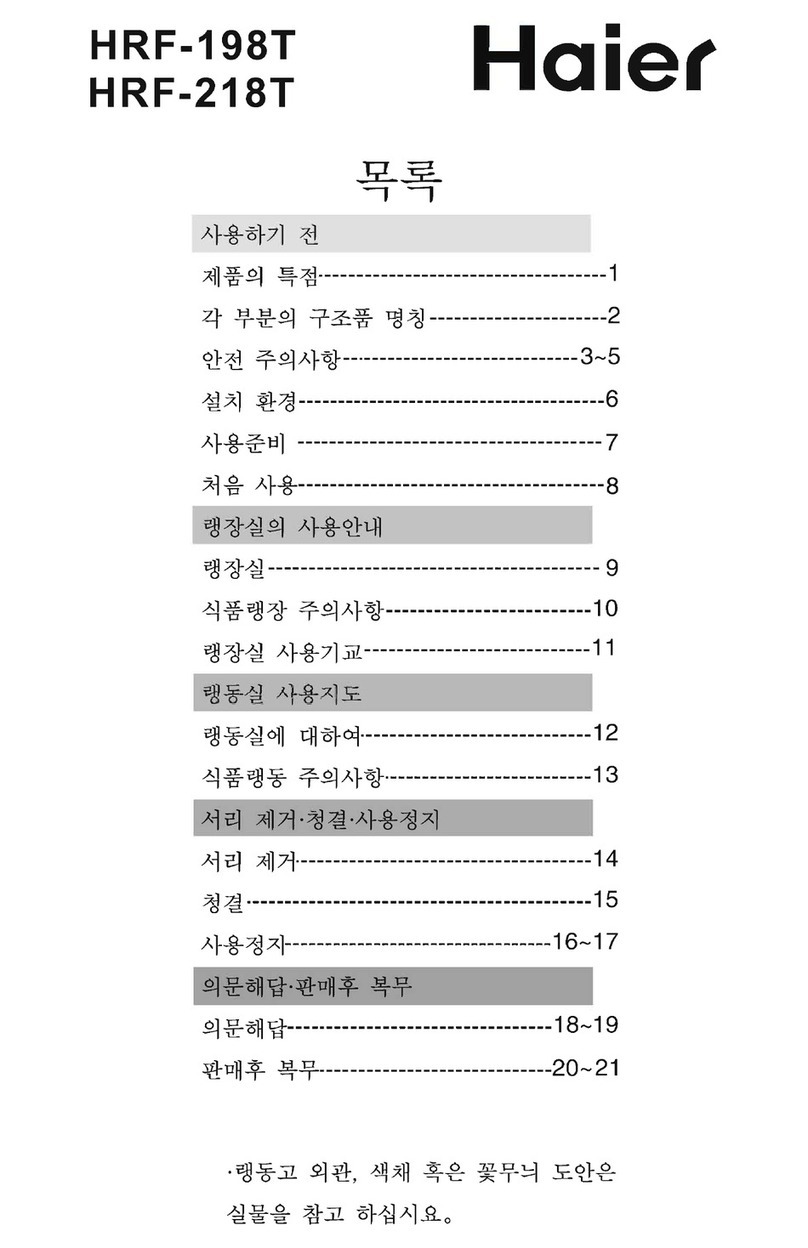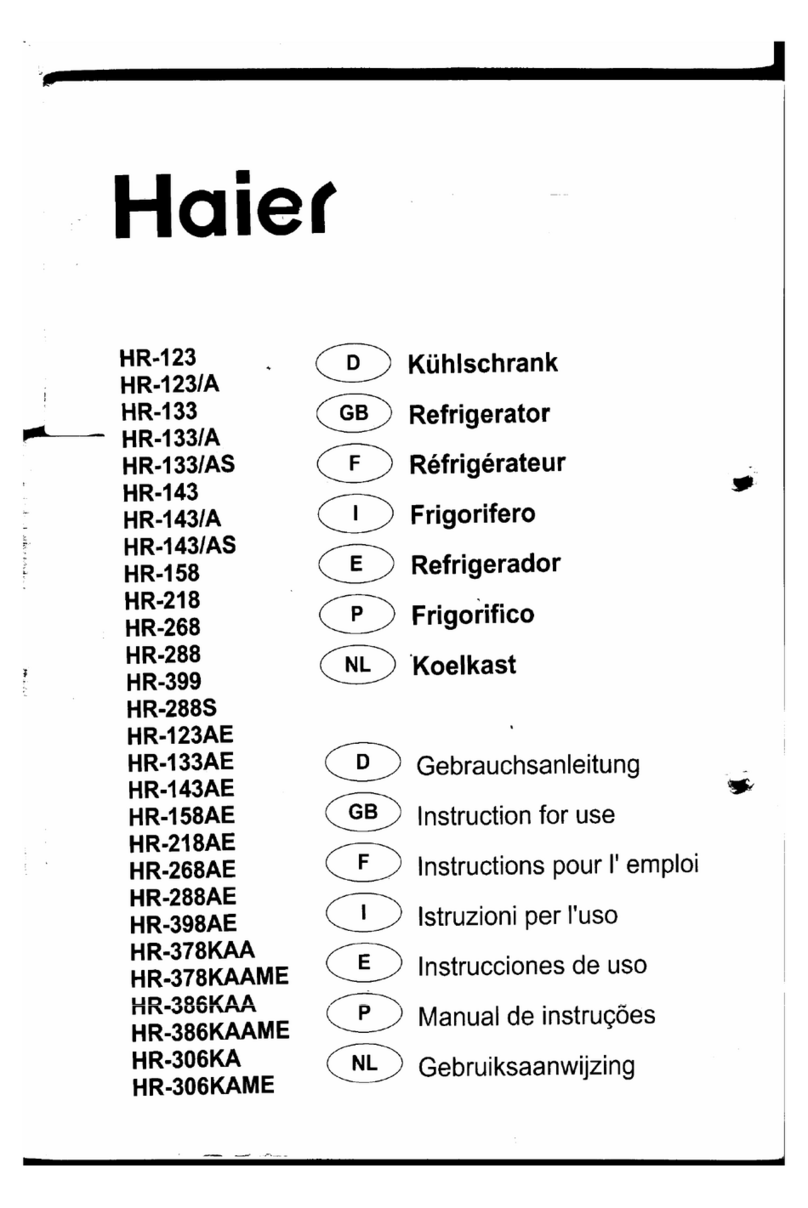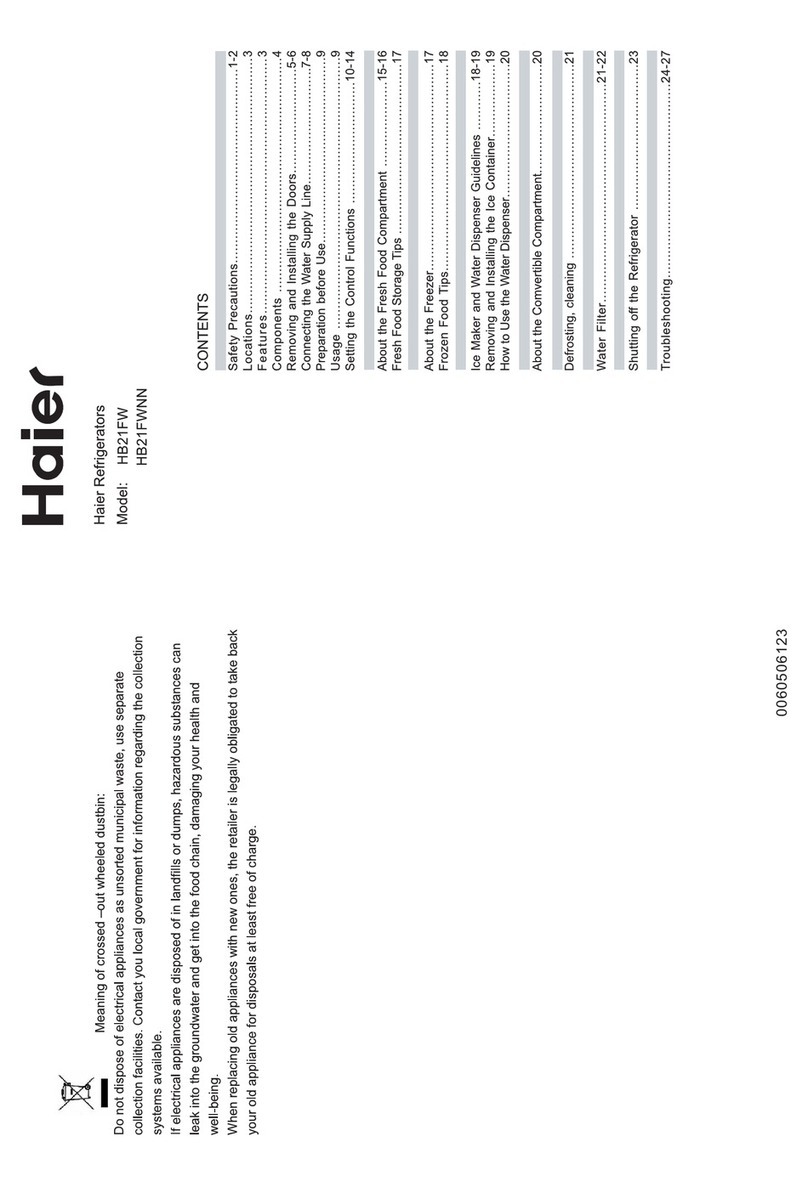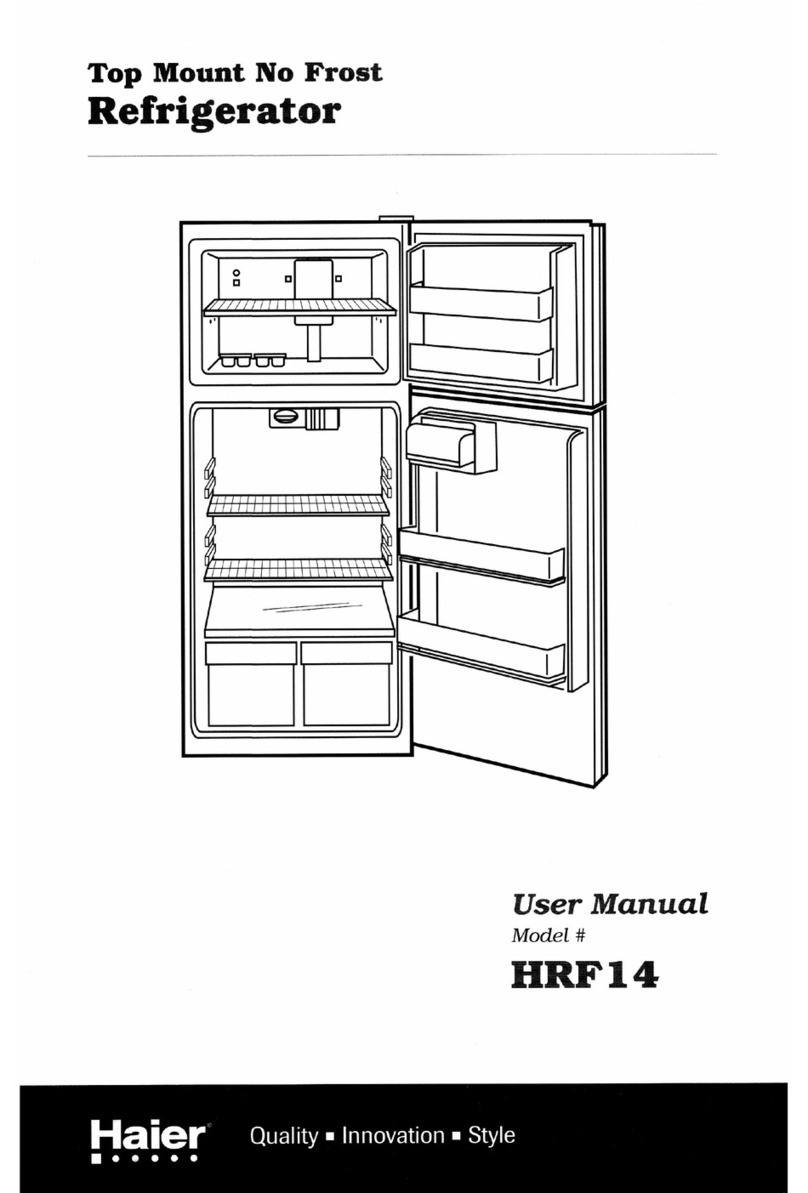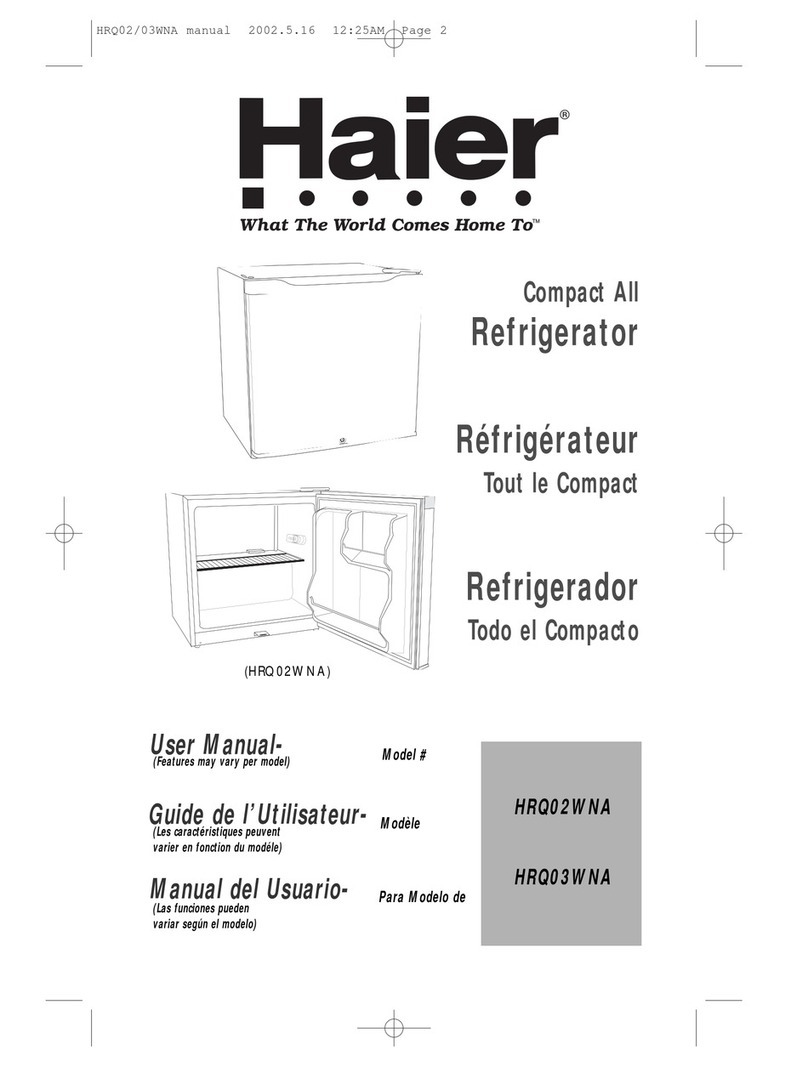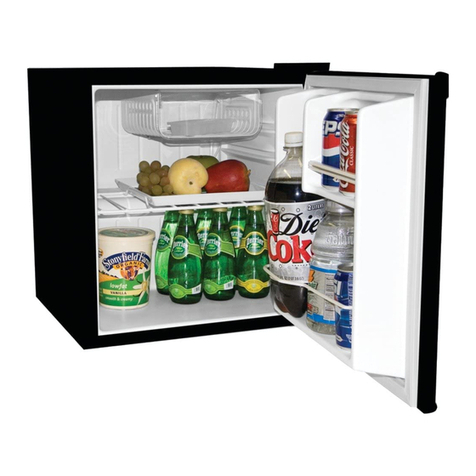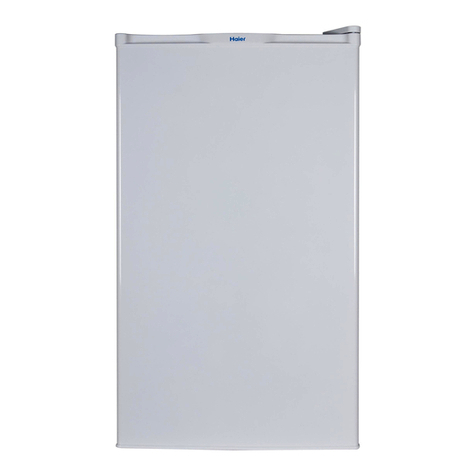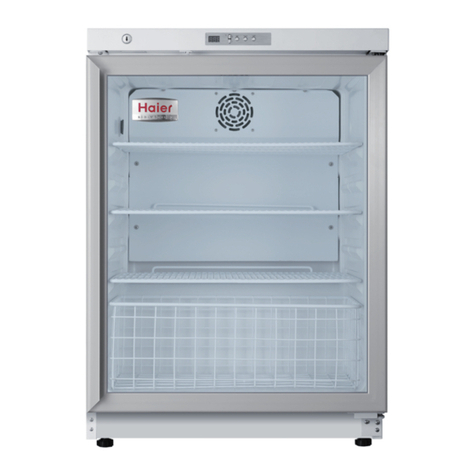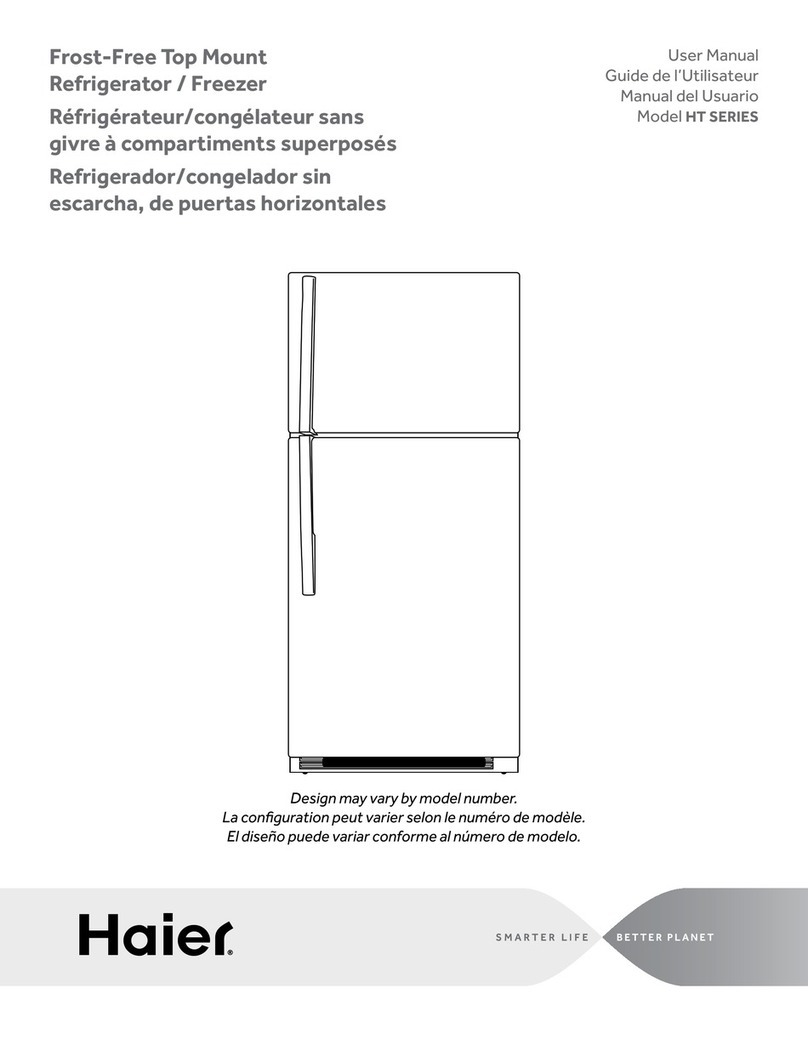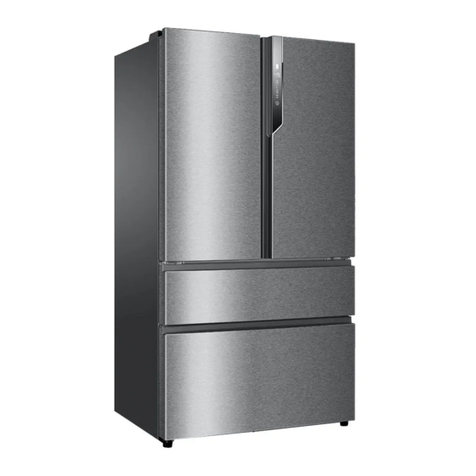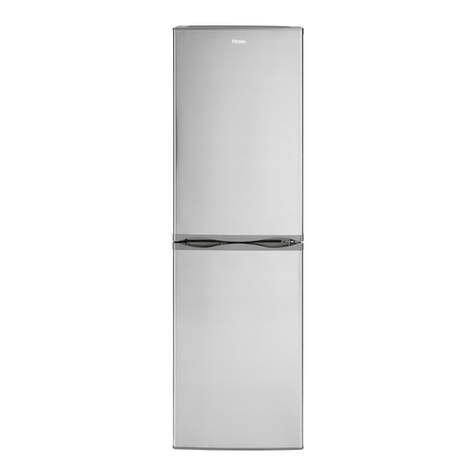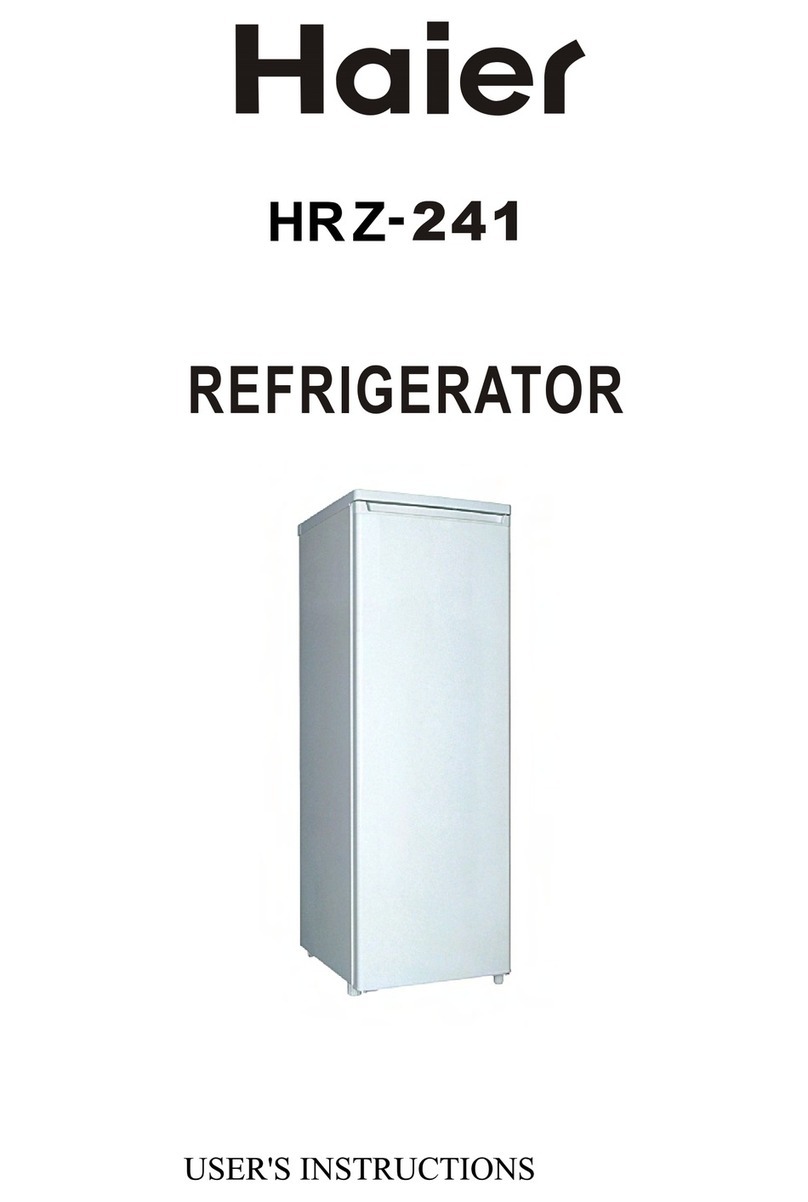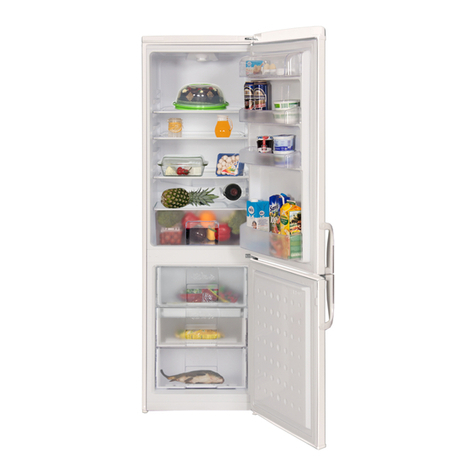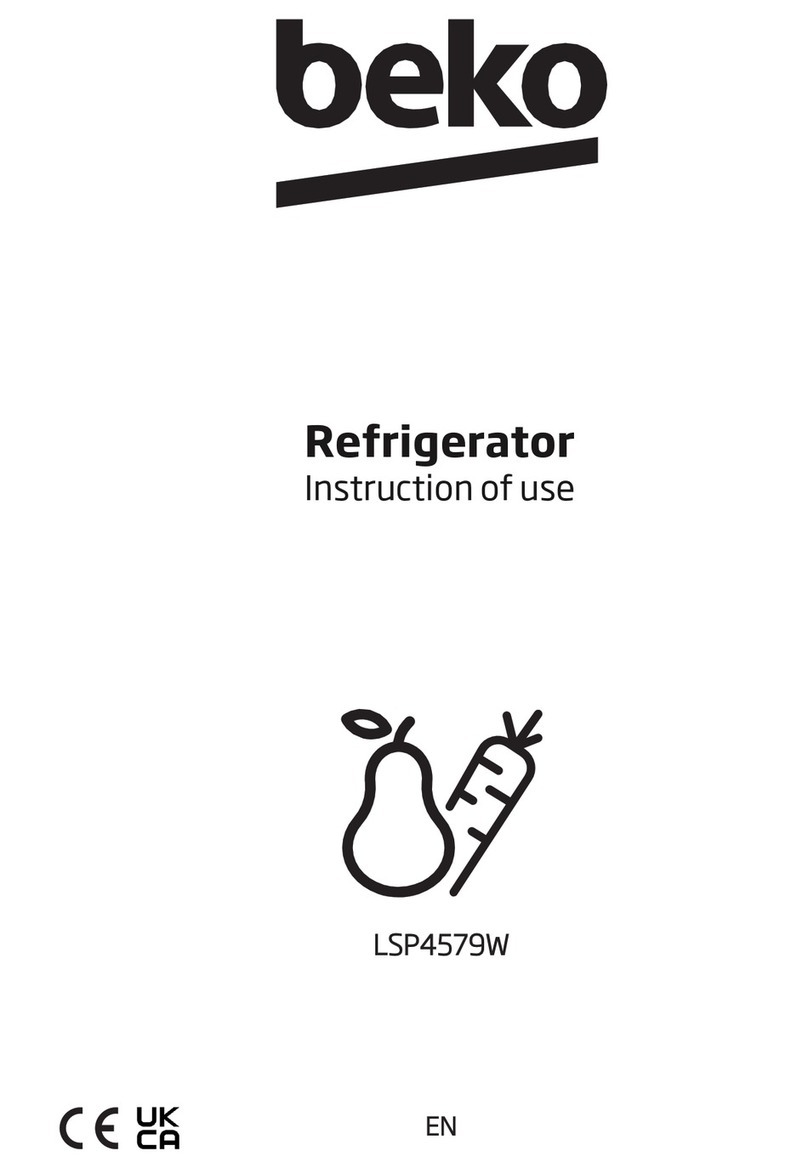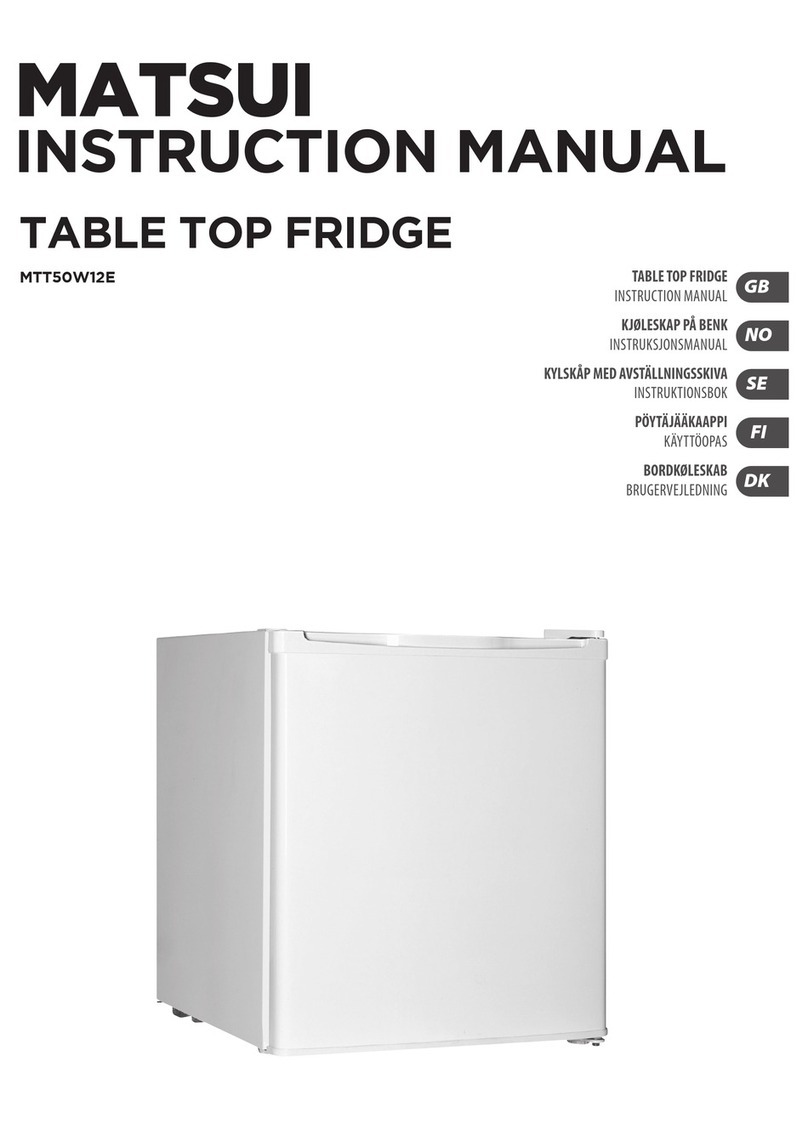English
5
INSTALLING YOUR REFRIGERATOR
Unpacking Your Refrigerator
1.Remove all packaging material. This includes the foam base and all adhesive tape holding the
accessories inside and outside.
2. Inspect and remove any remains of packing, tape or printed materials before powering on.
Leveling Your Refrigerator
•Your refrigerator has two leveling legs which are located in the front corners of your refrigerator. After
properly placing your refrigerator in its final position, you can level your refrigerator.
•Leveling legs can be adjusted by turning them clockwise to raise your refrigerator or by turning them
counterclockwise to lower your refrigerator. The refrigerator door will close easier when the leveling
legs are extended.
Proper Air Circulation
•To assure your unit works at the maximum efficiency it was designed for, you should install it in a
location where there is proper air circulation, plumbing and electrical connections.
• The following are recommended clearances around the refrigerator:
Sides ..................................3/4" (19mm)
Top......................................2" (50mm)
Back....................................2" (50mm)
Electrical Requirement
•Make sure there is a suitable power Outlet (115 volts, 15 amps outlet) with proper grounding to
power the unit.
• Avoid the use of three plug adapters or cutting off the third grounding in order to accommodate a two
plug outlet. This is a dangerous practice since it provides no effective grounding for the unit and may
result in shock hazard.
Install Limitations
•Do not install your refrigerator in any location not properly insulated or heated e.g. garage etc. Your
refrigerator was not designed to operate in temperature settings below 55° Fahrenheit.
• Select a suitable location for the refrigerator on a hard even surface away from direct sunlight or heat
source e.g. radiators, baseboard heaters, cooking appliances etc. Any floor unevenness should be
corrected with the leveling legs located on the front bottom corners of the refrigerator.
Use of Extension Cord
•Avoid the use of an extension cord because of potential safety hazards under certain conditions. If it is
necessary to use an extension cord, use only a 3-wire extension cord that has a 3-blade
grounding plug and a 3-slot outlet that will accept the plug.The marked rating of the extension cord
must be equal to or greater than the electrical rating of the
appliance.
Door Alignment (see Fig. 1)
1. Remove hinge cover screw.
2. Remove the top hinge cover.
3. Loosen the top hinge screws using a phillips head screwdriver.
4. Adjust the door or put a spacer in between and then tighten the
screws.
5. Replace the top hinge cover.
Fig. # 1
